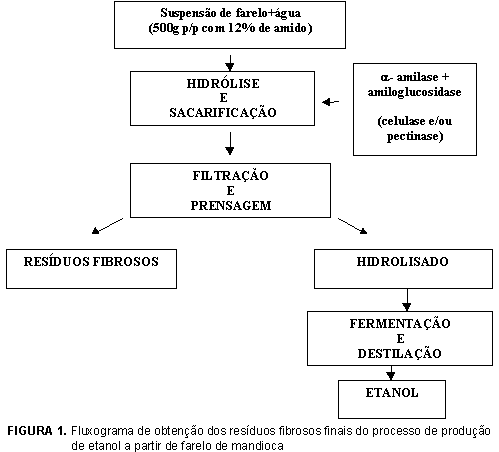The research had as propose to evaluate the residues of the enzymatic hydrolysis process of the ethanol production from cassava fibrous waste by dietetic fibers. Four hydrolysis process were carried out using the amylases, <FONT FACE="Symbol">a</font>-amylase and amyloglucosidase, with or without pectinase and/or cellulase. Proximate percent composition, pH, acidity, sugars and components of the fiber fraction (ADF, NDF, cellulose, hemicellulose, lignin and neutral sugars) was estimated. Microscopic analysis was made and the metabolic energy also was calculated. The results showed that all residues may be used as insoluble high-fiber product. The residues of the treatment with pectinase by complementary enzyme had a proximate proportion of the 1:1:1 starch, fibers and total sugars, and the glucose was the main sugar. The metabolic energy was 2.6 kcal/g. In the residues without pectinase the proportion was 2:1:1 and the metabolic energy was 3.1 kcal/g. Microscopic analysis showed that would have starch granules inside the unbroken cells and in the process with pectinase less granules were observed. An alternative for caloric value reduction would be the washing of the residue with water after the pressing process.
amylase; pectinase; cellulase; fibers; cassava fibrous waste






